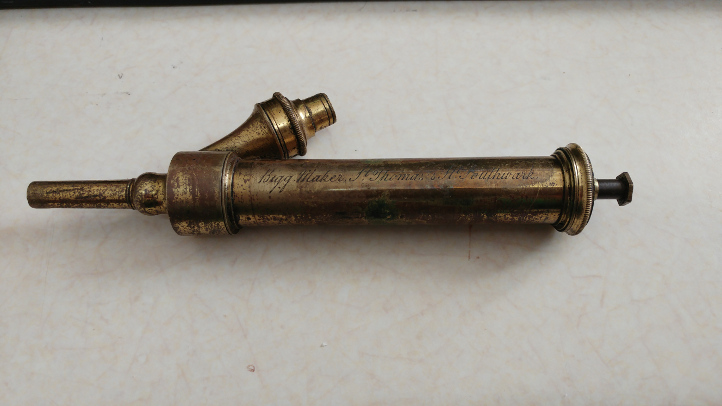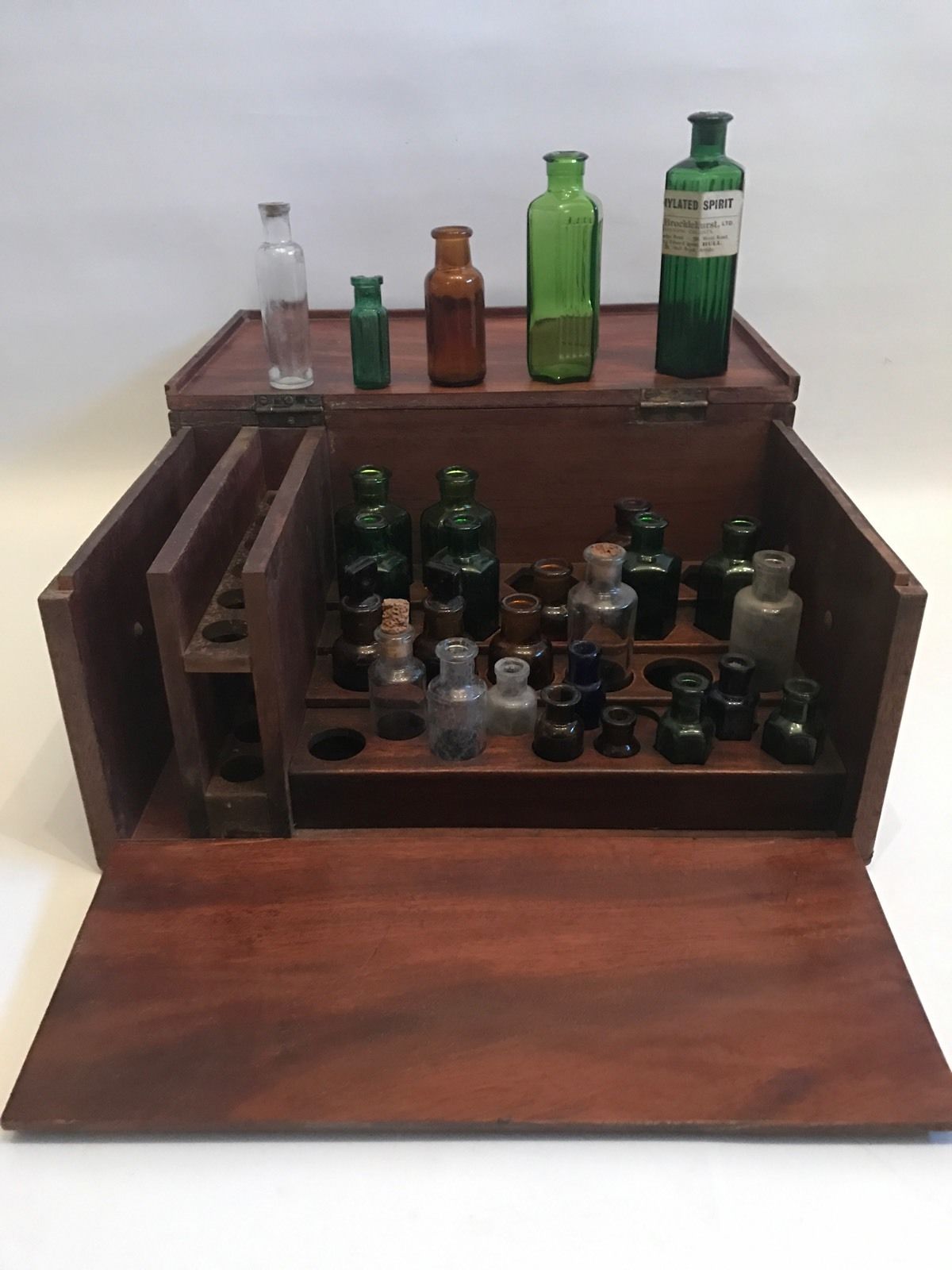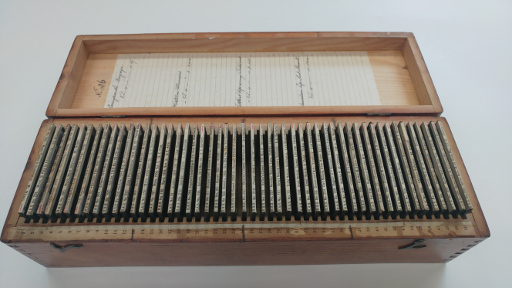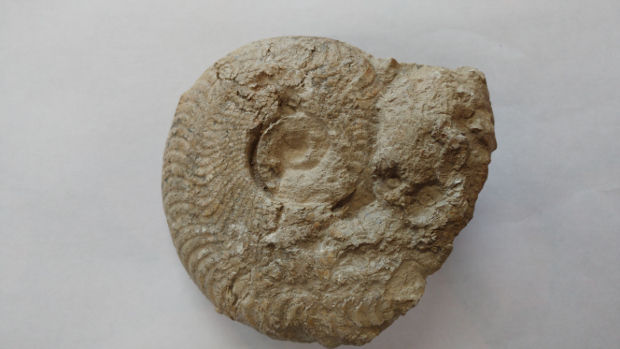Medical Syringe
 This 19th Century syringe is part of our Science and Medicine collection.
This 19th Century syringe is part of our Science and Medicine collection.
It is made of brass and carries the words "Bigg. Maker, St Thomas's St., Southwark" on its side.
During the 19th century, use of medicines that were effective in small doses, such as opiates and strychnine, were developing. Dr Francis Rynd is generally credited with the first successful injection in 1844. Dr Charles Hunter, a London surgeon, is thought to have created the term "hypodermic" to describe subcutaneous injection in 1858. The name originates from two Greek words: hypo, "under", and derma, "skin".
Around the year 1866, formerly metal barrels, like the one in our collection, were replaced by glass ones, allowing the volume of liquid remaining in the barrel to be seen.
 We have a 19th century Apothecary Cabinet and Glass Bottles in our Science and Medicine Collection.
We have a 19th century Apothecary Cabinet and Glass Bottles in our Science and Medicine Collection. We have a wooden box containing
We have a wooden box containing  This is a Jurassic limestone ammonite fossil from our Science collection. It was found in Somerset, UK and is between 200 and 240 million years old.
This is a Jurassic limestone ammonite fossil from our Science collection. It was found in Somerset, UK and is between 200 and 240 million years old.